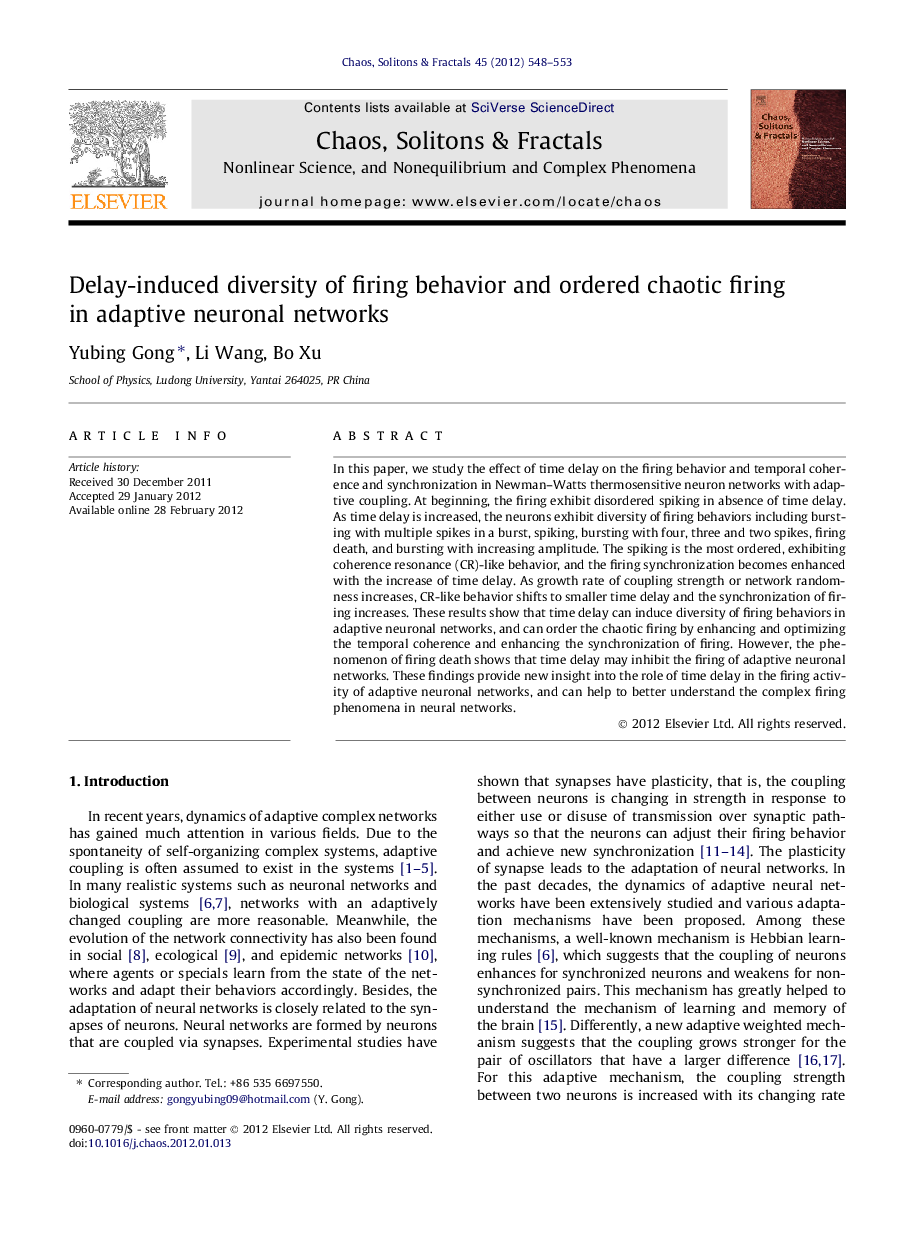| Article ID | Journal | Published Year | Pages | File Type |
|---|---|---|---|---|
| 1895890 | Chaos, Solitons & Fractals | 2012 | 6 Pages |
In this paper, we study the effect of time delay on the firing behavior and temporal coherence and synchronization in Newman–Watts thermosensitive neuron networks with adaptive coupling. At beginning, the firing exhibit disordered spiking in absence of time delay. As time delay is increased, the neurons exhibit diversity of firing behaviors including bursting with multiple spikes in a burst, spiking, bursting with four, three and two spikes, firing death, and bursting with increasing amplitude. The spiking is the most ordered, exhibiting coherence resonance (CR)-like behavior, and the firing synchronization becomes enhanced with the increase of time delay. As growth rate of coupling strength or network randomness increases, CR-like behavior shifts to smaller time delay and the synchronization of firing increases. These results show that time delay can induce diversity of firing behaviors in adaptive neuronal networks, and can order the chaotic firing by enhancing and optimizing the temporal coherence and enhancing the synchronization of firing. However, the phenomenon of firing death shows that time delay may inhibit the firing of adaptive neuronal networks. These findings provide new insight into the role of time delay in the firing activity of adaptive neuronal networks, and can help to better understand the complex firing phenomena in neural networks.
